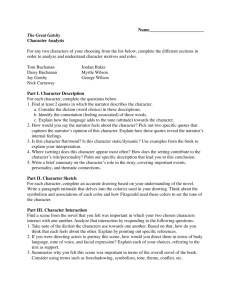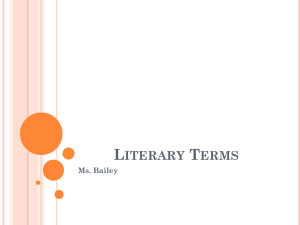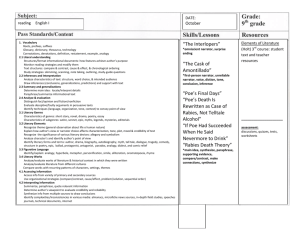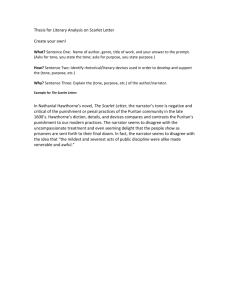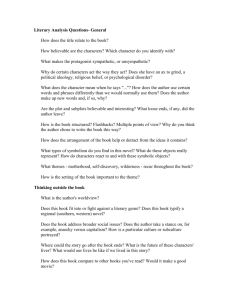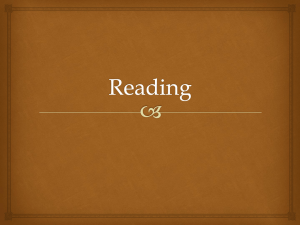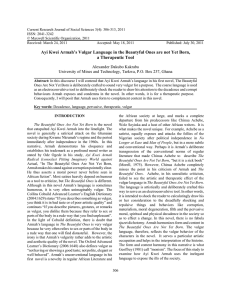AP-Lit-Comp-Summer-2015
advertisement
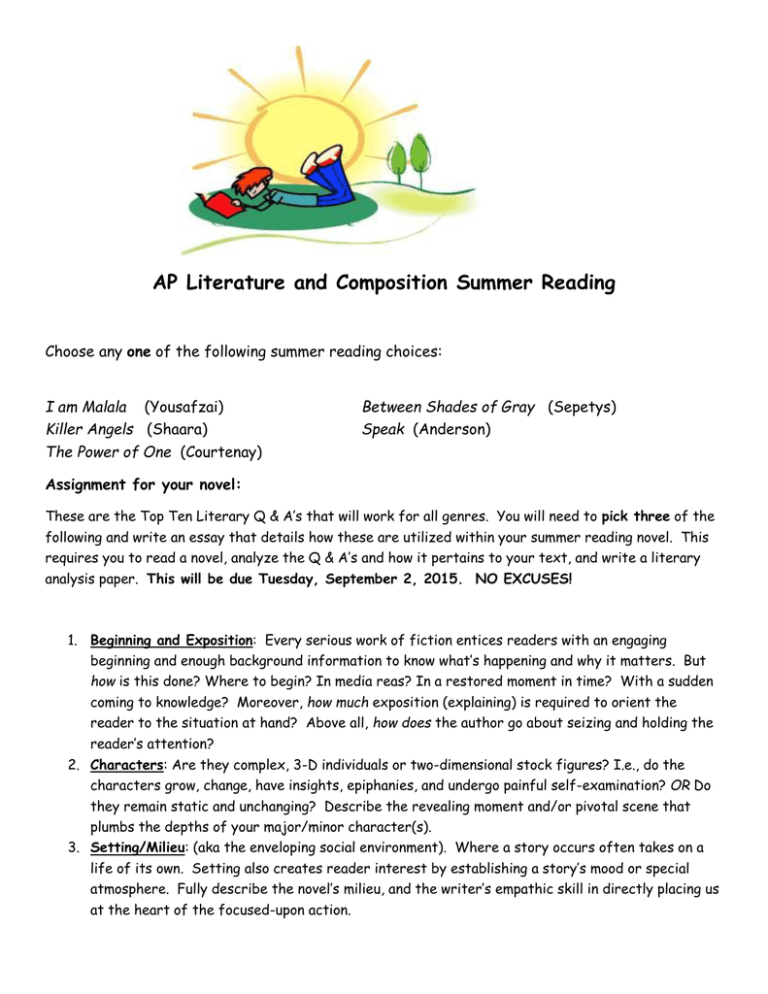
AP Literature and Composition Summer Reading Choose any one of the following summer reading choices: I am Malala (Yousafzai) Killer Angels (Shaara) The Power of One (Courtenay) Between Shades of Gray (Sepetys) Speak (Anderson) Assignment for your novel: These are the Top Ten Literary Q & A’s that will work for all genres. You will need to pick three of the following and write an essay that details how these are utilized within your summer reading novel. This requires you to read a novel, analyze the Q & A’s and how it pertains to your text, and write a literary analysis paper. This will be due Tuesday, September 2, 2015. NO EXCUSES! 1. Beginning and Exposition: Every serious work of fiction entices readers with an engaging beginning and enough background information to know what’s happening and why it matters. But how is this done? Where to begin? In media reas? In a restored moment in time? With a sudden coming to knowledge? Moreover, how much exposition (explaining) is required to orient the reader to the situation at hand? Above all, how does the author go about seizing and holding the reader’s attention? 2. Characters: Are they complex, 3-D individuals or two-dimensional stock figures? I.e., do the characters grow, change, have insights, epiphanies, and undergo painful self-examination? OR Do they remain static and unchanging? Describe the revealing moment and/or pivotal scene that plumbs the depths of your major/minor character(s). 3. Setting/Milieu: (aka the enveloping social environment). Where a story occurs often takes on a life of its own. Setting also creates reader interest by establishing a story’s mood or special atmosphere. Fully describe the novel’s milieu, and the writer’s empathic skill in directly placing us at the heart of the focused-upon action. 4. Conflict: the overall plot problem and its final solution OR non-solution. E.g., good v. evil might be the story’s overarching difficulty or challenge. 5. Complications: are individual moments of trial and trauma. By themselves complications may seem trivial; but invariably they add up to a confrontation between competing external or internal forces. (you can link and discuss #4 and #5 together). 6. Key moments: act as building blocks leading to a novel’s most dramatic scene(s). Keys frequently bring the ongoing action into sharp and clarifying focus. 7. Denouement: (untying the knot) - is the point where the fate of the central character is made clear. [Note: Denouements are sometimes referred to as a story’s moment of illumination; a story’s light bulb moment; the “Yeah, now I get it!” Question: Are your climatic Key Moments and Denouement joined or separate? 8. Distance and Tone: How close is the author to his material? Is he right next to his main characters…all, most, some, or none of the time? I.e. what degree of subjectivity and/or objectivity does the author employ to tell his story? The answer to that question often reveals the author’s tone: his attitude toward his people and the story he has set out to tell. [Give examples of the author’s closeness and tone!] 9. Focus of interest: Every story has a who (character); a what’s happening (storyline); a when (time frame); a where (setting); a why (character’s motivation to fight or flee); a what does it all finally mean? (theme); and a how (author’s writing craft). Which of the above literary terms dominates? For example, whose fate is really at stake? Who really wins or loses the conflict? [Supply concrete support from your reading!] 10. Focus of narration: Who tells a particular story is absolutely critical. If we are not persuaded the narrator writes with total commitment and authority, we remain skeptical and dissatisfied. Consider the following major points-of-view: a. First Person Narrator: “I” tell my own story. I am the chief character in the tale. b. First Person Observer: I tell his story since he is #1. Still, I was a witness. c. Omniscient Narrator: The all-knowing author who enters anyone’s mind at will. d. Central Intelligence Narrator: Author focuses on one person’s head and heart. e. Author/Observer: An objective telling of a tale without entry into someone’s mind. f. Combinations of these POV’s with varying distance and tone foster verisimilitude. (the appearance or semblance of truth).
